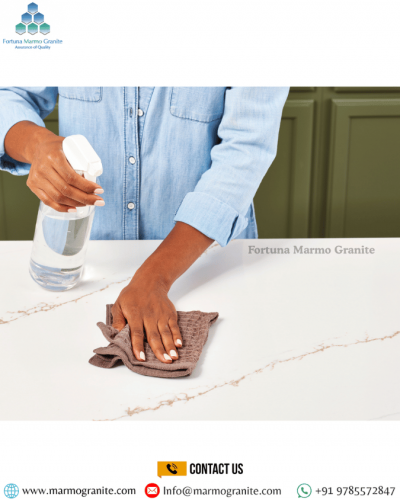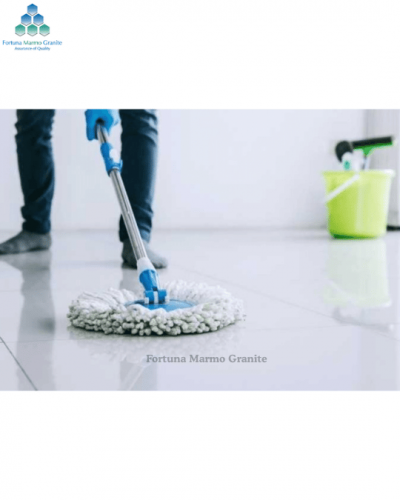Ultimate Guide: How to Clean Granite Stone the Right Way
How to Clean Granite Stone the Right Way Granite. Just the word conjures images of timeless elegance, unyielding strength, and natural beauty. From gleaming kitchen countertops to luxurious bathroom vanities and stunning flooring, granite has become a hallmark of sophisticated design in homes across the globe, including the beautiful residences of Udaipur, Rajasthan. Its unique patterns and vibrant colors are a testament to millennia of geological processes, making each slab a unique work of art.
In addition, However, like any treasured possession, the enduring allure of granite depends significantly on how well it's cared for. While incredibly durable, granite is not invincible, and improper cleaning can slowly chip away at its natural brilliance, leading to dullness, stains, and even permanent damage. If you've invested in this magnificent stone, you owe it to yourself – and your granite – to learn the correct way to clean and maintain it. Yet, This ultimate guide will arm you with all the knowledge you need to keep your granite pristine, sparkling, and as breathtaking as the day it was installed. Say goodbye to guesswork and hello to lasting beauty!


Why Proper Cleaning Matters: Preserving Your Investment
You might think, "It's just stone, soap and water should be fine, right?" While simple, this approach often falls short and can even be detrimental. Granite, though dense, is a porous material. Moreover, This means it has tiny microscopic pores that can absorb liquids, oils, and other substances. Without proper cleaning and sealing, these pores become entry points for stains and bacteria.
Furthermore, many common household cleaners contain harsh chemicals, acids, or abrasives that can etch, dull, or scratch the polished surface of your granite. In addition, Understanding the right techniques and products is crucial not just for cleanliness, but for preserving its structural integrity and aesthetic appeal for decades to come.
Understanding Granite: A Quick Primer on Porosity
Essential Cleaning Supplies: Your Granite Care Toolkit
Before you start, gather these indispensable items:
- Soft Microfiber Cloths: Absolutely essential for gentle wiping and polishing.
- Mild, pH-Neutral Dish Soap: A small amount goes a long way for daily cleaning.
- Warm Water: Your primary cleaning agent.
- Spray Bottle: Handy for mixing and applying solutions.
- Rubbing Alcohol (Optional): For specific disinfecting and streak-free drying.
- Acetone (Optional): For oil-based stains (use sparingly and with caution).
- Hydrogen Peroxide (Optional): For organic stains (use sparingly and with caution).
- Plastic Putty Knife: For gently scraping off dried residue.
- Poultice Ingredients (Optional): For stubborn stains (e.g., baking soda, flour, paper towels).
- High-Quality Granite Sealer: Crucial for long-term protection.
Daily Cleaning: The Foundation of Shine
Consistency is key when it comes to granite maintenance. Daily care prevents buildup and keeps your surfaces sparkling.
- Wipe Down Immediately After Use: For kitchen counters, wipe down with a damp microfiber cloth after preparing meals. For bathroom vanities, wipe away toothpaste or makeup spills. This simple step prevents everyday grime from hardening or seeping in.
- Address Spills Promptly: This is arguably the most critical daily habit. Whether it's coffee, wine, juice, or cooking oil, blot (don't wipe) spills immediately with a soft cloth or paper towel. The longer a liquid sits, especially if your granite isn't perfectly sealed, the higher the chance of a stubborn stain.
Weekly/Regular Cleaning: Deepening the Clean
Once a week, or as needed, give your granite a more thorough cleaning:
- Prepare Your Solution: Fill a spray bottle with warm water and add just a few drops of mild, pH-neutral dish soap. Agitate gently to mix. Avoid creating excessive suds. Alternatively, use a specifically formulated pH-neutral granite cleaner.
- Spray and Wipe: Lightly mist a section of your granite surface with the solution. Immediately wipe it down with a clean, damp microfiber cloth. Work in small sections to ensure thorough cleaning and rinsing.
- Rinse Thoroughly: This step is crucial. After cleaning with the soapy solution, wet a separate clean microfiber cloth with plain warm water and wipe down the granite again. This removes any soap residue, which can dull the surface over time and attract more dirt.
Tackling Tough Stains: A Spot Treatment Guide
- Oil-Based Stains (Grease, Cooking Oil, Lotion, etc.):
- Method: These stains darken the granite. The best approach is a poultice (explained below) made with baking soda and a solvent like acetone or hydrogen peroxide. The poultice draws the oil out.
- Quick Fix for Fresh Stains: Sprinkle cornstarch or baking soda directly onto the fresh oil stain to absorb some of the oil before cleaning. Let it sit for 15-30 minutes, then sweep away.
- Water Spots/Hard Water Stains:
- Method: Often appear as cloudy rings. Lightly buff with a dry steel wool pad (grade 0000) or a non-abrasive scrubber. For tougher spots, a mixture of baking soda and a small amount of water to form a paste can be applied, left for a few minutes, then wiped away and rinsed.
- Organic Stains (Coffee, Tea, Wine, Fruit, Food, etc.):
- Method: These usually leave a brownish-pink stain. Apply a poultice made with hydrogen peroxide and a little ammonia (if safe for your granite, always test first) mixed with flour or paper towel pulp.
- Ink Stains:
- Method: Try rubbing alcohol on a cotton ball. Gently dab the stain, don't rub aggressively.
- Etching (Not a Stain):
- Problem: Etching is dullness or a rough patch caused by acidic substances dissolving the stone's surface. It's not a stain you can remove, but actual damage to the polish.
- Solution: Minor etching might be improved with a granite polishing compound, but severe etching often requires professional re-polishing. This highlights why avoiding acidic cleaners is paramount!
What NOT to Use on Granite: Crucial Warnings
This section cannot be stressed enough. Using the wrong products is the fastest way to damage your beautiful granite.
- Acidic Cleaners: NEVER use vinegar, lemon juice, ammonia, Windex, bleach, or any bathroom cleaners containing acids (e.g., toilet bowl cleaners, rust removers). These will etch the polished surface of your granite, leaving dull, unsightly marks that are difficult and expensive to repair.
- Abrasive Cleaners: In addition, Avoid scouring powders, steel wool pads (unless 0000 grade for specific tough spots), or scrub brushes with stiff bristles. These can scratch and dull the surface.
- Harsh Chemicals: Moreover, Stay away from drain cleaners, paint strippers, or oven cleaners. They contain highly corrosive chemicals that will severely damage granite.
- General Purpose Cleaners (unless specified "safe for natural stone"): Many all-purpose cleaners contain ingredients that are too harsh for granite. Stick to pH-neutral formulations.
Conclusion
Indian Granite Supplier , learning how to clean granite stone the right way is essential to preserving its natural charm, strength, and long-term functionality. Granite is one of the most durable and visually appealing natural stones used in homes and commercial spaces, but even the toughest surfaces need proper care to maintain their shine and structural integrity. In addition, Regular cleaning with a pH-balanced, non-acidic cleaner, using soft cloths or sponges, and avoiding abrasive chemicals or tools are vital steps in keeping granite surfaces pristine. Consequently, How to Clean Granite Stone the Right Way Equally important is sealing the stone periodically, which acts as a protective barrier against stains, spills, and moisture infiltration. By establishing a consistent cleaning routine—whether for countertops, backsplashes, floors, or vanity tops—you protect your investment while enhancing the overall aesthetics of your space.
Moreover, At Fortuna Marmo Granite, we go beyond being a global supplier of premium Indian granite, we are also committed to educating our clients on how to maintain the natural beauty of their stone surfaces. Yet, How to Clean Granite Stone the Right Way With years of experience and a deep understanding of the natural stone industry, we offer not only a wide range of high-quality granite options but also expert support on how to protect and care for them effectively. As your trusted granite partner from India, Moreover, Fortuna Marmo Granite ensures that every slab delivered is matched with ongoing support so that the beauty and durability of your granite continue to impress for years to come.

